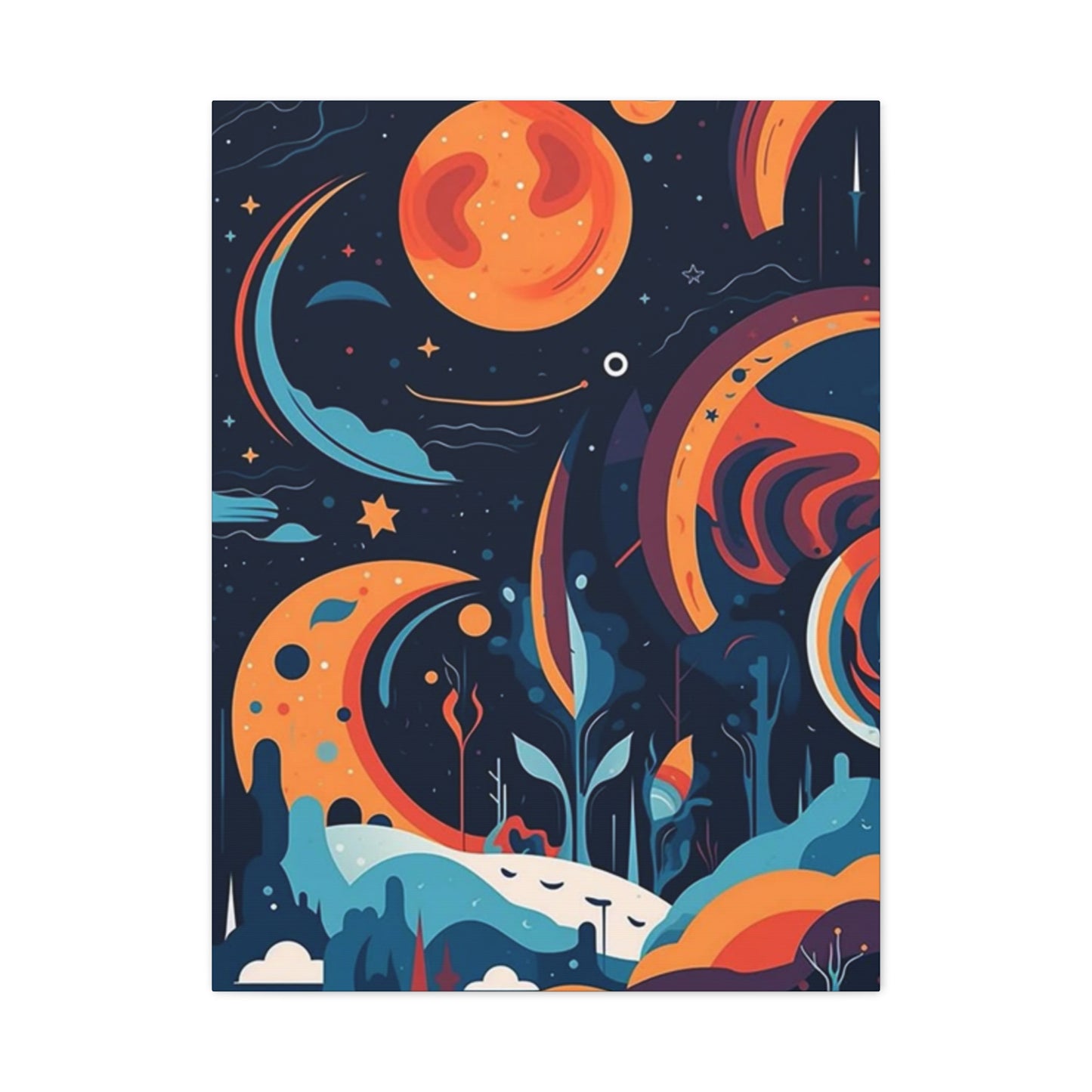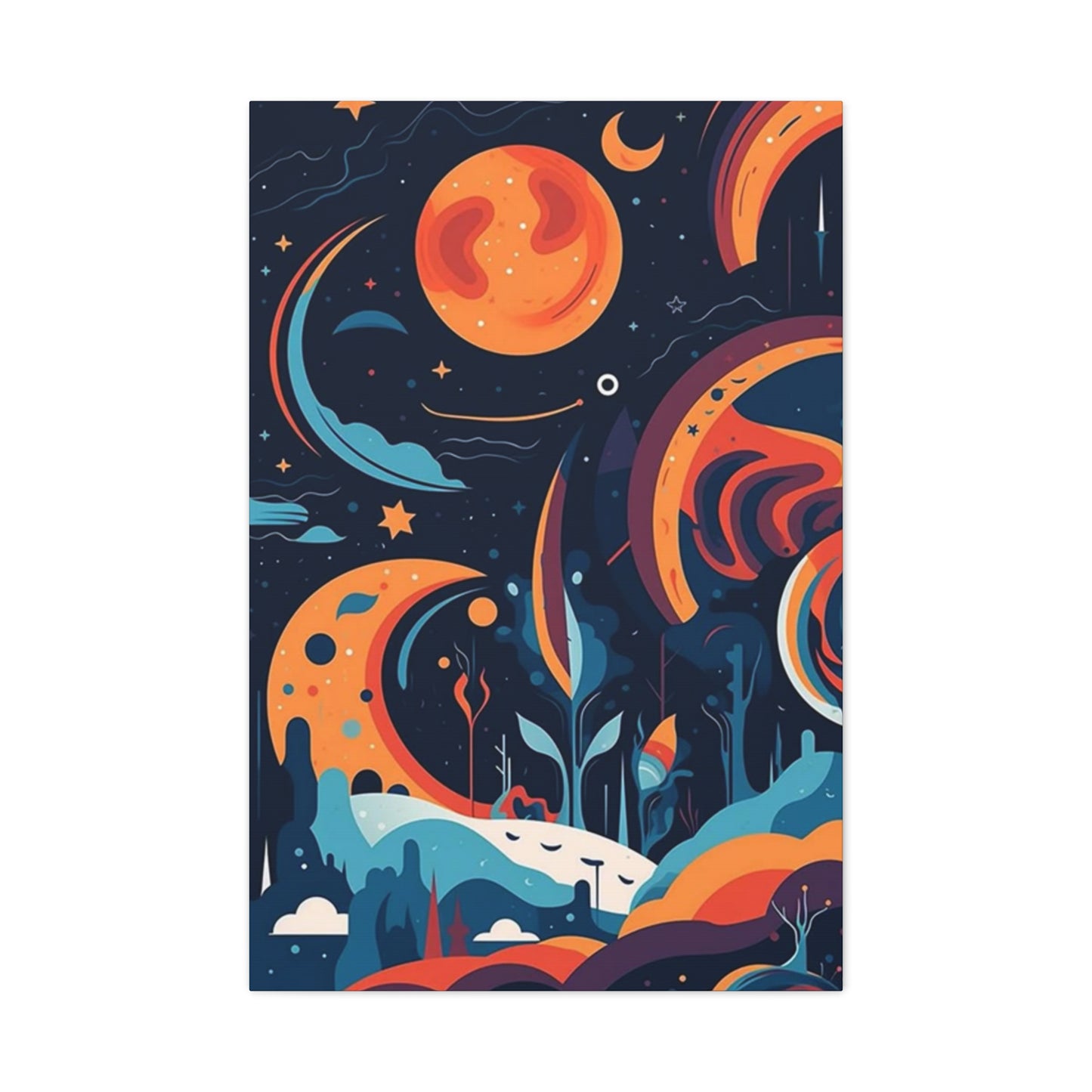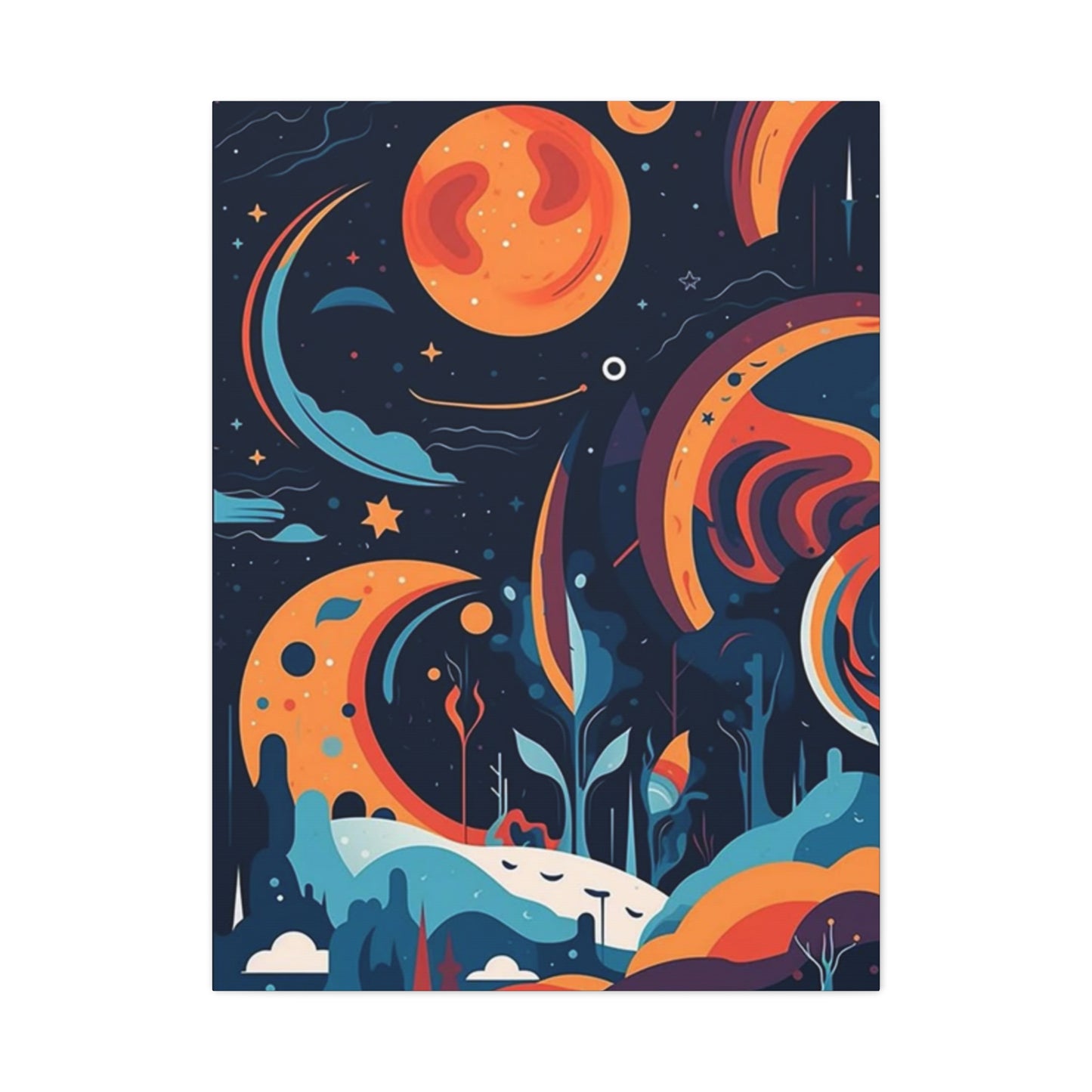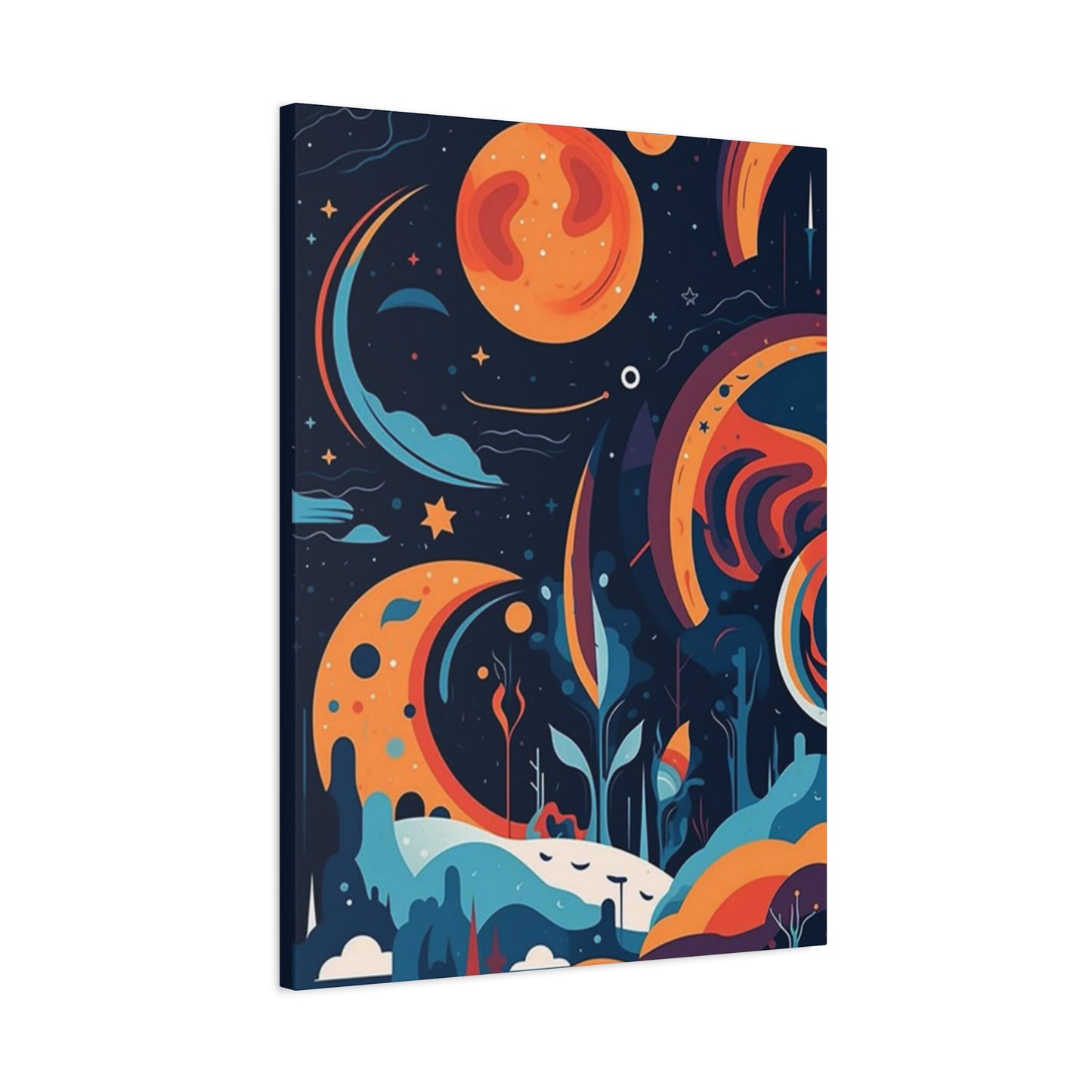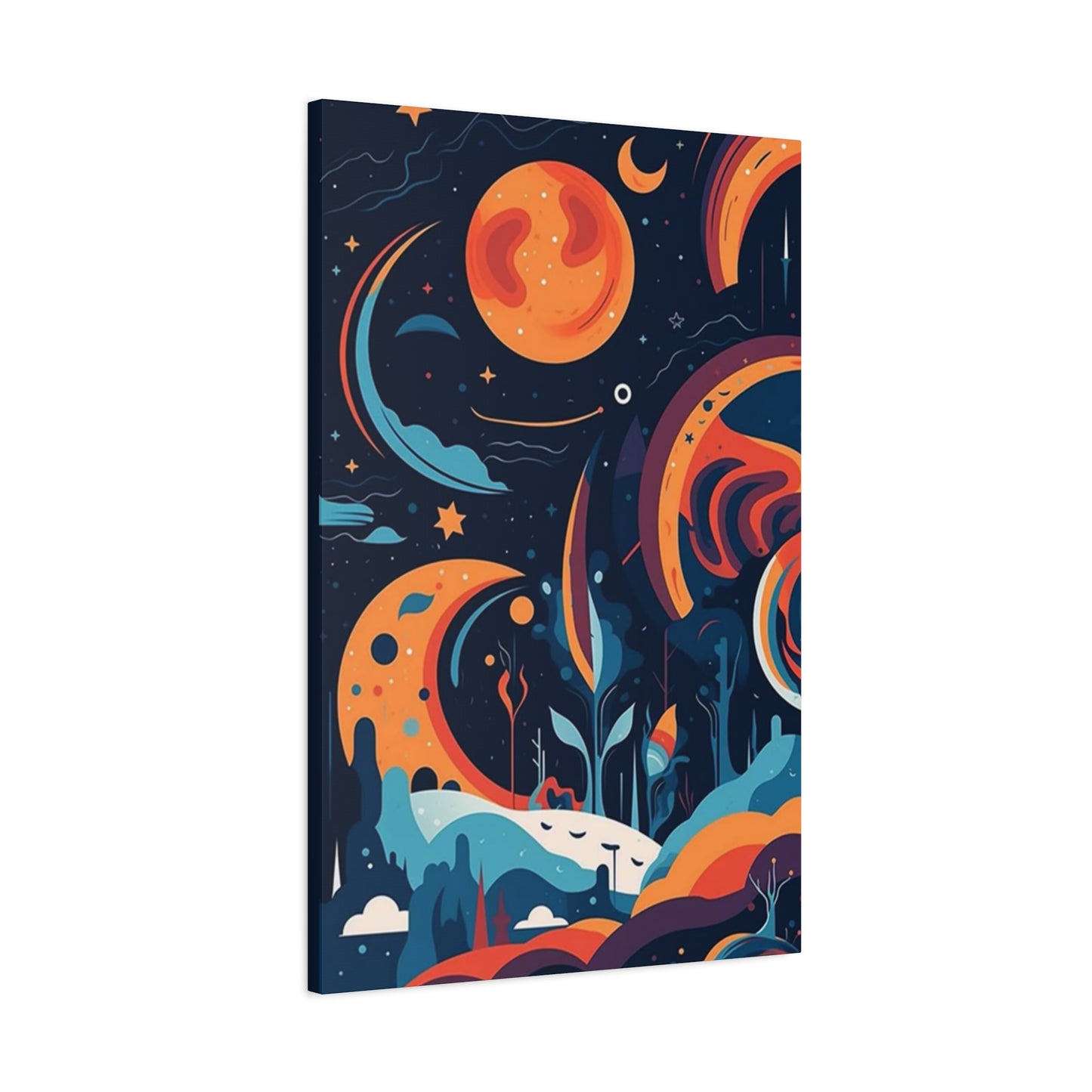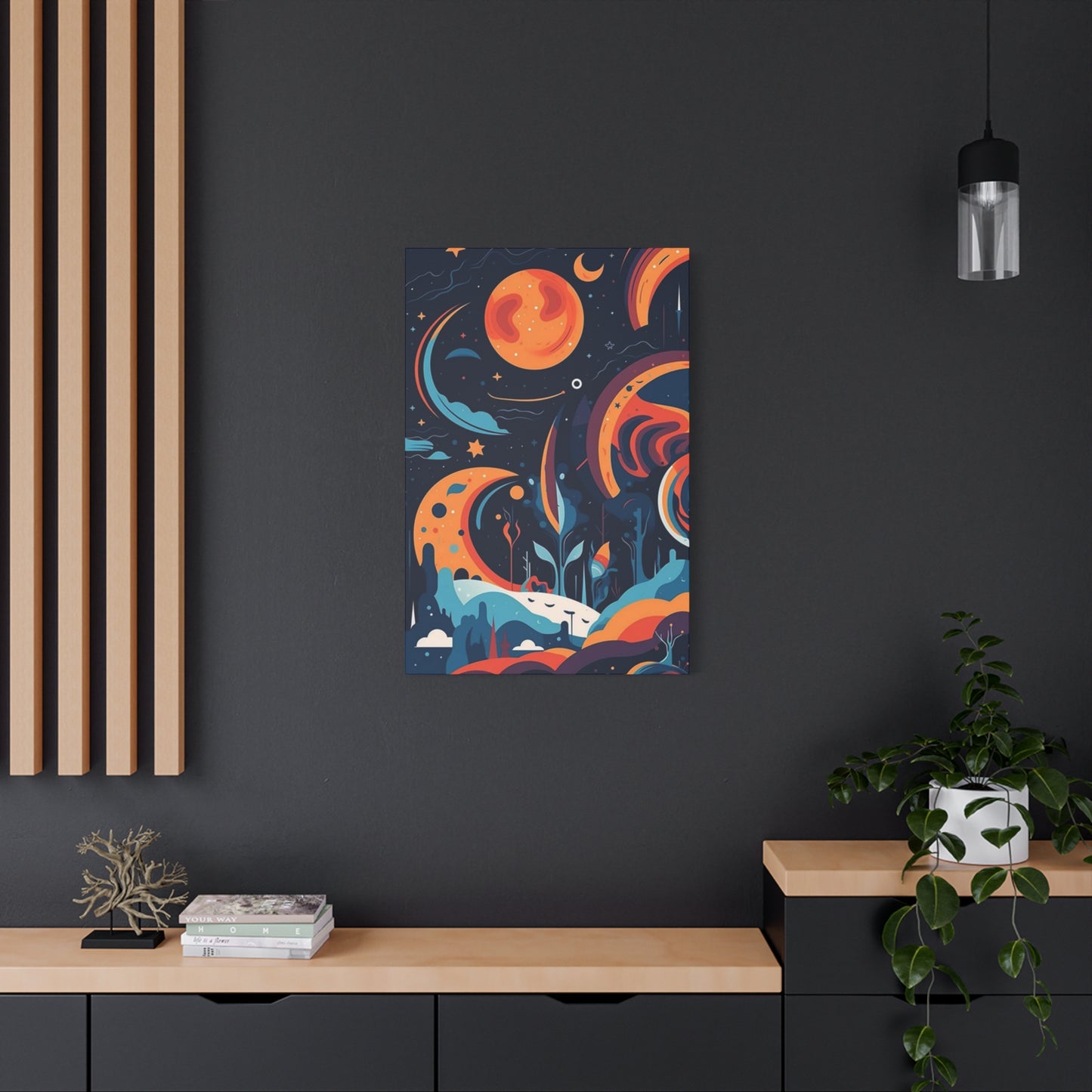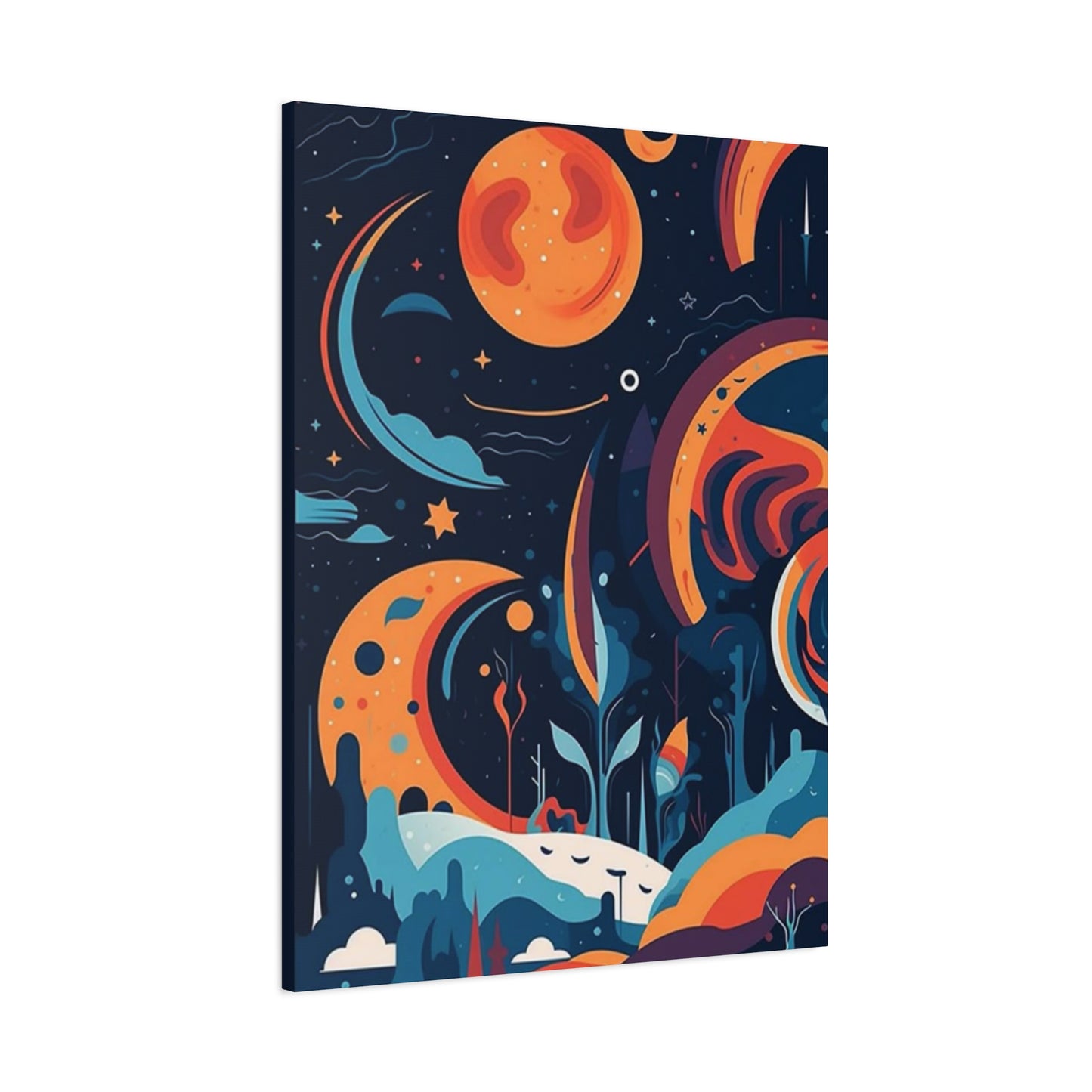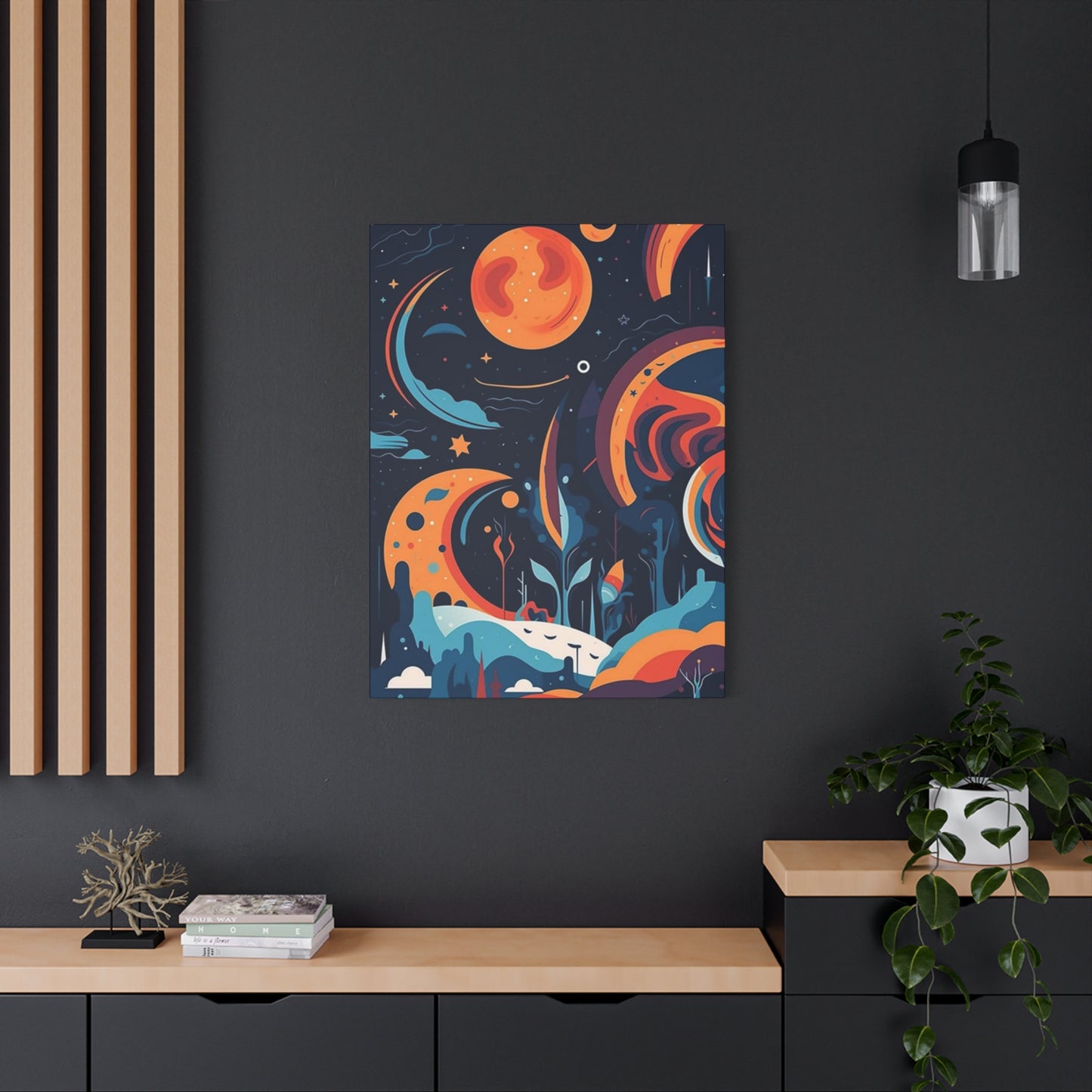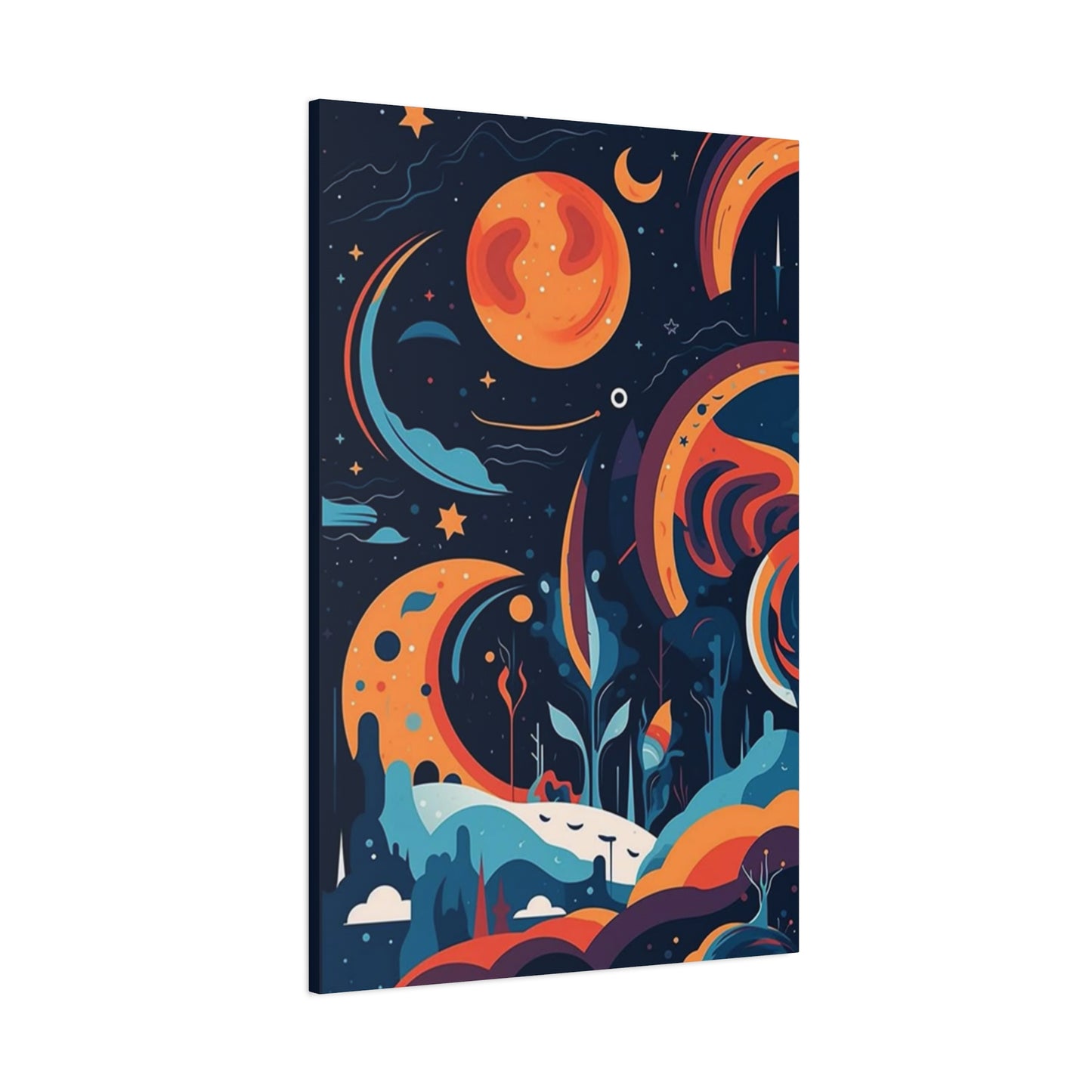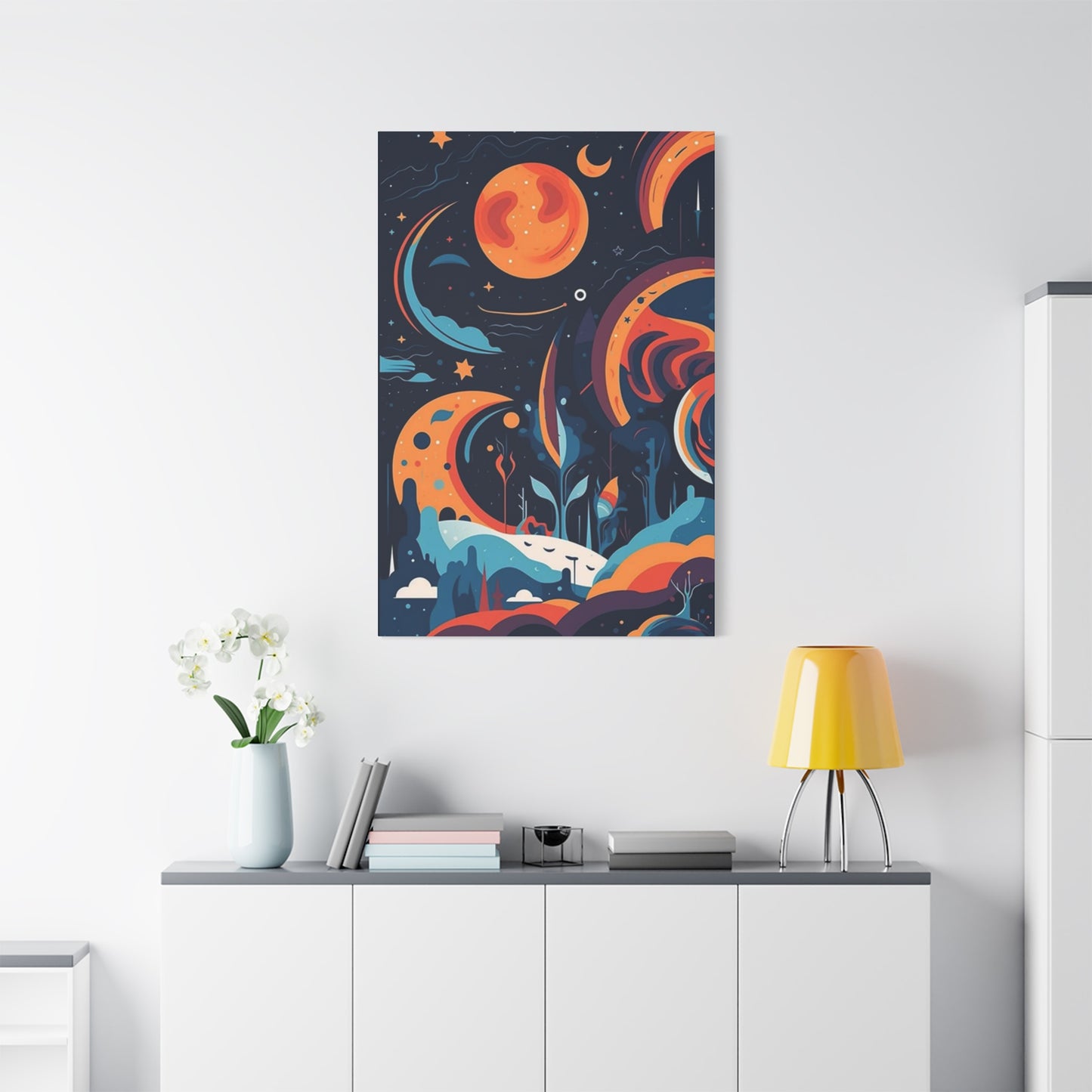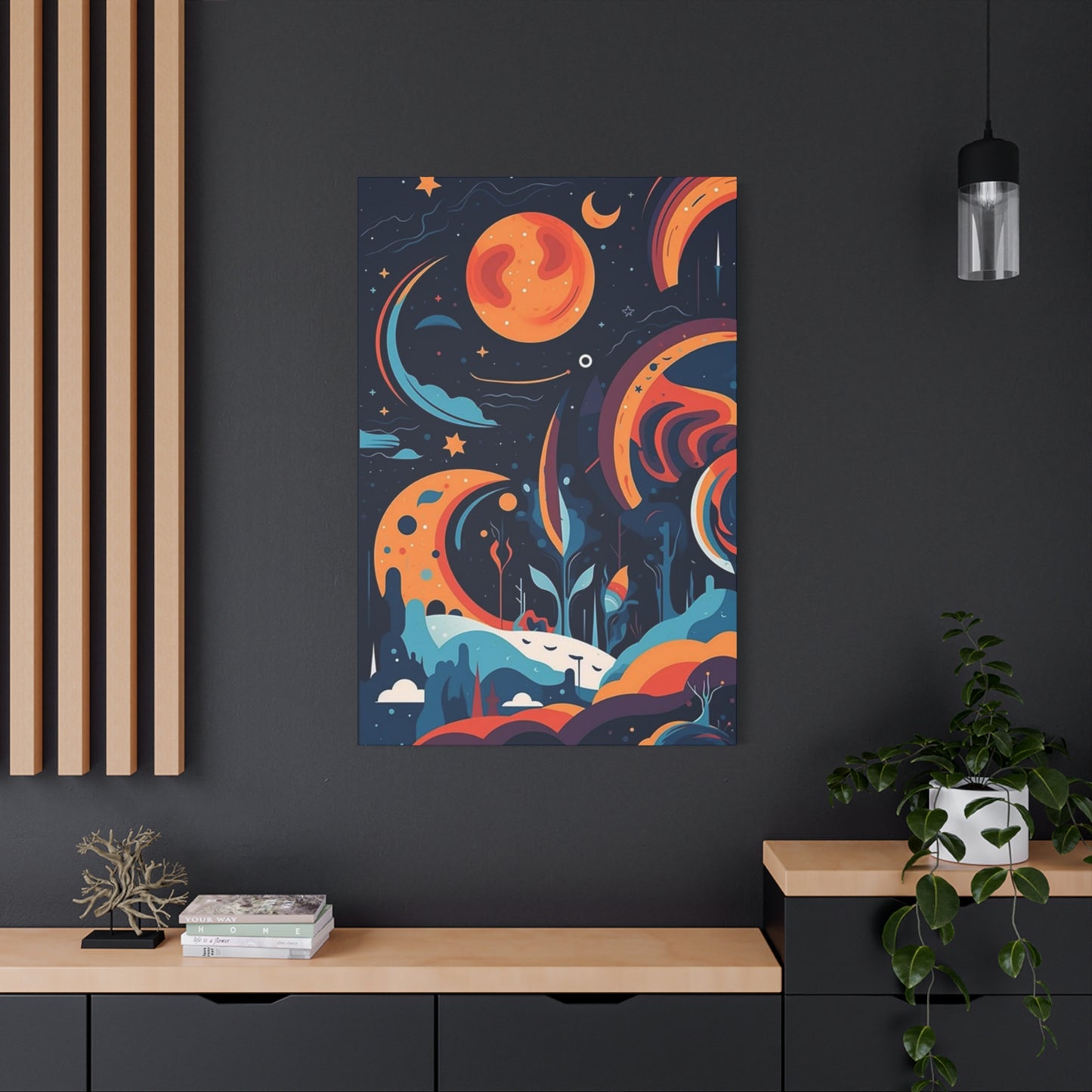Artistic Moon Phase Décor: Inspiring Young Minds Through Montessori Astronomy Wall Art
Creating an enriching educational environment for children requires thoughtful consideration of visual elements that can spark curiosity and facilitate learning. Moon phase artwork represents a powerful intersection of scientific education and artistic expression, particularly within Montessori-inspired learning environments. These carefully crafted visual aids serve multiple purposes, from introducing complex astronomical concepts to young learners to creating aesthetically pleasing spaces that encourage exploration and wonder.
The integration of lunar cycle artwork into children's spaces reflects a growing understanding of how visual learning tools can enhance comprehension and retention of scientific concepts. Rather than relying solely on traditional textbook illustrations, educators and parents are increasingly turning to artistic interpretations of astronomical phenomena that can capture young imaginations while delivering educational content.
Contemporary approaches to educational décor emphasize the importance of creating environments that stimulate intellectual curiosity while maintaining visual harmony. Moon phase artwork achieves this balance by presenting complex scientific information through accessible artistic mediums that appeal to various learning styles and developmental stages.
Creative Lunar Cycle Artwork for Young Learners
The development of specialized artwork focusing on lunar cycles represents a significant advancement in educational design philosophy. These artistic pieces go beyond simple scientific diagrams to create immersive visual experiences that can transform any learning space into a gateway for astronomical discovery.
Modern interpretations of moon phase artwork incorporate various artistic styles and techniques, from watercolor renderings that capture the ethereal quality of moonlight to geometric representations that emphasize the mathematical precision of lunar cycles. Each approach offers unique benefits for different learning preferences and educational objectives.
The artistic representation of lunar phases serves multiple educational functions simultaneously. Visual learners benefit from the clear, sequential representation of how the moon appears to change shape throughout its cycle. Kinesthetic learners can engage with interactive elements or three-dimensional representations that allow for hands-on exploration of these concepts.
Contemporary artists working in this field understand the importance of balancing scientific accuracy with artistic interpretation. Their work maintains the essential educational value while presenting information in ways that resonate with young audiences. This careful balance ensures that children receive accurate scientific information while developing aesthetic appreciation for natural phenomena.
The color palettes chosen for lunar cycle artwork play a crucial role in both educational effectiveness and aesthetic appeal. Deep blues and purples often represent the night sky, while varying shades of white, gray, and yellow capture the moon's appearance under different lighting conditions. These color choices help children develop visual associations that reinforce their understanding of astronomical concepts.
Texture and composition techniques in modern moon phase artwork create visual interest that holds children's attention while conveying important information. Artists employ various methods, from smooth gradients that suggest the gentle transition between phases to bold contrasts that clearly delineate different stages of the lunar cycle.
The integration of abstract elements into lunar cycle artwork allows for creative interpretation while maintaining educational integrity. These abstract qualities can stimulate imagination and discussion, encouraging children to ask questions and explore concepts beyond the immediate visual representation.
Montessori-Inspired Astronomical Visual Learning
The Montessori educational philosophy emphasizes hands-on learning and child-directed exploration, making visual aids an essential component of effective instruction. Astronomical artwork designed with Montessori principles in mind incorporates specific design elements that support independent learning and discovery.
Montessori-inspired moon phase artwork typically features clear, uncluttered compositions that allow children to focus on essential concepts without distraction. This approach aligns with Maria Montessori's belief that learning materials should be aesthetically pleasing while serving specific educational purposes.
The sequential nature of lunar phases makes them particularly well-suited to Montessori learning principles. Children can observe patterns, make predictions, and develop understanding through repeated exposure to these visual representations. This process supports the development of observation skills and logical thinking patterns that are fundamental to scientific inquiry.
Color coordination in Montessori-inspired artwork follows specific principles designed to create harmonious learning environments. Muted tones and natural color palettes help create calming spaces that promote concentration and focus. These design choices reflect the Montessori emphasis on creating prepared environments that support optimal learning conditions.
The size and positioning of elements within Montessori lunar artwork consider children's developmental needs and physical perspectives. Artwork placed at child height encourages independent observation and interaction, while appropriate scaling ensures that visual elements are accessible to learners of various ages and developmental stages.
Interactive elements incorporated into Montessori-style moon phase displays might include moveable pieces, textural components, or sequential arrangements that children can manipulate. These features support the Montessori principle of learning through manipulation and direct experience with educational materials.
The presentation of scientific information through artistic mediums aligns with Montessori beliefs about integrated learning. Rather than compartmentalizing subjects, this approach demonstrates the connections between art, science, and mathematics, encouraging children to see learning as a holistic experience.
Documentation and observation opportunities built into Montessori lunar displays allow children to track changes over time and develop recording skills. These features support the development of scientific thinking patterns and encourage children to become active participants in their learning process.
Classroom Integration of Lunar Phase Artwork
Educational environments benefit significantly from the thoughtful integration of astronomical artwork that supports curriculum objectives while creating inspiring learning spaces. The incorporation of moon phase displays in classroom settings requires careful consideration of pedagogical goals and practical implementation strategies.
Effective classroom integration begins with understanding how lunar phase artwork can support existing curriculum standards and learning objectives. Science curricula at various grade levels include astronomy components that can be enhanced through visual displays that reinforce key concepts and vocabulary.
The positioning of lunar artwork within classroom spaces affects both its educational impact and its contribution to the overall learning environment. Strategic placement near science learning centers, reading areas, or discussion spaces can maximize opportunities for spontaneous learning and conversation about astronomical concepts.
Interactive components built into classroom lunar displays encourage active engagement and hands-on exploration. These might include moveable phase indicators, observation journals, or measurement tools that allow students to track lunar changes over extended periods.
Cross-curricular connections become apparent when lunar phase artwork is integrated thoughtfully into classroom environments. Mathematics concepts related to patterns, cycles, and measurement naturally emerge from lunar observations, while language arts opportunities develop through descriptive writing and vocabulary development activities.
Seasonal connections between lunar phases and other natural phenomena can be highlighted through classroom displays that show relationships between moon cycles and tides, plant growth, or animal behaviors. These connections help students develop systems thinking skills and understand the interconnected nature of natural phenomena.
Assessment opportunities arise naturally from classroom lunar displays when students are encouraged to make observations, record changes, and discuss their findings. These authentic assessment methods provide valuable insights into student understanding while supporting continued learning and exploration.
Teacher preparation for integrating lunar artwork includes understanding both the scientific concepts being presented and the artistic elements that make displays effective. Professional development opportunities that combine astronomy content knowledge with visual design principles can enhance teachers' ability to maximize the educational impact of these resources.
Minimalist Design Philosophy in Lunar Educational Art
The application of minimalist design principles to educational lunar artwork reflects contemporary understanding of how visual simplicity can enhance learning effectiveness. This approach emphasizes essential elements while eliminating unnecessary complexity that might distract from core educational objectives.
Minimalist lunar phase artwork focuses attention on the fundamental characteristics of each moon phase without overwhelming young learners with excessive detail or decorative elements. This clarity supports comprehension and helps children develop accurate mental models of lunar phenomena.
Color palettes in minimalist lunar artwork typically employ limited color schemes that highlight essential contrasts and relationships. The strategic use of black, white, and gray can effectively demonstrate the play of light and shadow that creates visible moon phases, while selective color accents can highlight specific features or relationships.
Geometric simplification in minimalist lunar displays helps children recognize patterns and relationships that might be obscured in more complex representations. Simple shapes and clean lines create visual clarity that supports pattern recognition and mathematical thinking about cycles and sequences.
Negative space utilization in minimalist lunar artwork serves educational purposes by creating visual breathing room that allows individual elements to stand out clearly. This approach helps prevent visual overwhelm while directing attention to specific learning objectives.
Typography and labeling in minimalist lunar displays follow principles of clarity and simplicity, using readable fonts and minimal text to support rather than compete with visual elements. This approach ensures that written information enhances rather than detracts from the visual learning experience.
The reduction of decorative elements in minimalist lunar artwork doesn't diminish aesthetic appeal but rather creates a different type of beauty based on proportion, balance, and harmony. This approach can help children develop appreciation for subtle design qualities and refined aesthetic sensibilities.
Scalability advantages of minimalist lunar artwork make these designs suitable for various display sizes and contexts, from small classroom posters to large wall installations. The simplicity of design elements ensures that educational effectiveness is maintained across different scales and viewing distances.
Abstract Artistic Interpretations of Moon Cycles
Abstract representations of lunar phenomena offer unique opportunities to engage children's imagination while conveying scientific information through non-literal visual interpretations. These artistic approaches can make astronomical concepts more accessible to young learners who may struggle with purely representational imagery.
Color symbolism in abstract lunar artwork allows for creative expression while maintaining educational relevance. Deep purples might represent the mystery of space, while graduated yellows could symbolize the moon's changing illumination patterns. These symbolic associations help children develop connections between visual elements and scientific concepts.
Texture exploration through abstract lunar art introduces tactile elements that can enhance learning for children who benefit from multisensory experiences. Rough textures might represent crater surfaces, while smooth gradients could suggest the gentle transition between moon phases.
Geometric abstraction of lunar cycles can highlight mathematical relationships and patterns that might be less obvious in realistic representations. Circular forms, crescents, and linear arrangements can emphasize the cyclical nature of lunar phases while creating visually striking compositions.
Emotional resonance in abstract lunar artwork can help children develop personal connections to astronomical phenomena. Art that evokes feelings of wonder, curiosity, or peaceful contemplation can enhance motivation to learn more about scientific concepts.
Interpretive flexibility in abstract lunar representations allows for multiple valid interpretations and encourages children to think creatively about scientific concepts. This openness to interpretation can stimulate discussion and critical thinking skills that are valuable across academic disciplines.
Movement suggestion through abstract elements can help children visualize the dynamic nature of astronomical phenomena. Flowing lines, gradient transitions, or sequential arrangements can convey the sense of continuous change that characterizes lunar cycles.
Cultural integration possibilities exist when abstract lunar artwork incorporates design elements or symbolic references from various cultural traditions that have observed and celebrated lunar phenomena. This approach can broaden children's understanding of how different cultures have interpreted astronomical events throughout history.
Canvas Print Technology for Educational Applications
Modern printing technology has revolutionized the production and accessibility of high-quality educational artwork for classroom and home learning environments. Canvas printing techniques offer particular advantages for lunar phase artwork intended for extended educational use.
Durability considerations make canvas prints ideal for educational settings where artwork may be exposed to frequent handling, cleaning, and environmental changes. The robust nature of canvas materials ensures that educational investments maintain their visual appeal and effectiveness over extended periods.
Color reproduction accuracy in modern canvas printing processes ensures that educational lunar artwork maintains scientific accuracy while preserving artistic integrity. Advanced printing technologies can capture subtle color variations and tonal relationships that are essential for effective astronomical education.
Texture enhancement possibilities with canvas printing add tactile interest to lunar phase artwork without compromising durability or educational effectiveness. The natural texture of canvas materials can suggest the surface qualities of celestial bodies while providing visual interest that holds children's attention.
Size flexibility in canvas printing allows for customization of lunar artwork to suit specific educational environments and display requirements. From small individual study materials to large classroom installations, canvas printing can accommodate various scale needs while maintaining image quality.
Mounting and display options for canvas prints provide flexibility in installation and positioning within educational spaces. Lightweight mounting systems make it possible to reposition artwork seasonally or to create rotating displays that maintain student interest over time.
Cost effectiveness of canvas printing technology makes high-quality educational artwork more accessible to schools and families with limited budgets. The combination of reasonable production costs and extended durability creates favorable cost-per-use ratios for educational applications.
Environmental considerations in canvas print production include the use of eco-friendly inks and sustainable materials that align with educational institutions' environmental stewardship goals. These considerations ensure that educational choices support broader institutional values and community expectations.
Montessori Home Environment Design Integration
The extension of Montessori educational principles into home environments requires careful attention to how visual elements contribute to learning-rich spaces that support child development. Lunar phase artwork can play a significant role in creating these educationally supportive home environments.
Room placement strategies for lunar artwork in Montessori homes consider both educational objectives and family lifestyle patterns. Locations that encourage regular observation and discussion, such as breakfast areas or bedtime routines spaces, can maximize the educational impact of these visual resources.
Scale considerations for home lunar displays differ from classroom applications, requiring artwork sizes that suit domestic spaces while maintaining educational effectiveness. Smaller, more intimate displays may actually enhance learning by creating cozy observation opportunities that encourage family discussion and shared exploration.
Integration with existing home décor requires balancing educational objectives with aesthetic considerations that support harmonious living environments. Lunar artwork that complements existing color schemes and design themes can enhance both educational value and family satisfaction with living spaces.
Multi-generational learning opportunities arise when lunar artwork in home environments becomes a focus for family discussions and shared observations. Parents, grandparents, and children can engage together in tracking lunar changes and discussing related scientific concepts.
Seasonal display rotation possibilities allow families to maintain interest and engagement with lunar concepts throughout the year. Changing displays or adding complementary seasonal elements can keep lunar learning fresh and relevant to ongoing family experiences.
Privacy and personal space considerations ensure that educational elements enhance rather than overwhelm children's personal environments. Lunar artwork should contribute to creating calm, reflective spaces that support both learning and emotional well-being.
Maintenance and care requirements for home lunar displays should be manageable within typical family routines while preserving educational effectiveness. Durable materials and designs that resist damage from normal household activities ensure long-term educational value.
Early Childhood Development Through Astronomical Art
The integration of astronomical concepts through artistic representation supports multiple aspects of early childhood development, from cognitive growth to emotional and social development. Lunar phase artwork can serve as a catalyst for various developmental achievements in young learners.
Cognitive development benefits include the enhancement of pattern recognition skills through exposure to cyclical lunar phenomena. Children develop understanding of sequence, cause and effect, and temporal relationships through repeated observation of lunar phase progressions.
Language development opportunities emerge naturally from discussions about lunar artwork, introducing scientific vocabulary in meaningful contexts while encouraging descriptive language use. Children practice communication skills while developing precise terminology for astronomical observations.
Mathematical thinking skills develop through exposure to lunar cycles that demonstrate counting, sequencing, and measurement concepts. The regular patterns inherent in lunar phenomena provide concrete examples of mathematical relationships that children can observe and discuss.
Scientific inquiry skills begin developing when children are encouraged to make predictions, observations, and connections related to lunar artwork displays. These experiences lay foundational understanding for more advanced scientific thinking in later educational stages.
Emotional development benefits include the sense of wonder and curiosity that astronomical artwork can inspire, contributing to positive attitudes toward learning and exploration. The beauty and mystery of lunar phenomena can foster emotional connections to scientific concepts.
Social development opportunities arise when lunar artwork becomes a focus for group discussions, collaborative observations, or shared projects. Children practice communication skills, learn to share observations, and develop appreciation for different perspectives on natural phenomena.
Creative expression possibilities expand when children are encouraged to create their own artistic interpretations of lunar phenomena. These activities integrate scientific observation with artistic creation, supporting development in multiple domains simultaneously.
Cultural awareness development can occur when lunar artwork incorporates diverse cultural perspectives on astronomical phenomena, helping children understand how different cultures have observed and interpreted the same natural events throughout history.
Classroom Display Strategies for Maximum Impact
Effective implementation of lunar phase artwork in educational settings requires strategic planning that considers both pedagogical objectives and practical classroom management needs. Successful display strategies maximize educational impact while supporting overall classroom functionality.
Height and positioning considerations ensure that lunar displays are accessible to all students while maintaining clear sight lines for group instruction. Adjustable display systems can accommodate children of different heights and support inclusive learning environments.
Lighting considerations affect both the visibility and aesthetic impact of lunar artwork displays. Natural lighting can enhance certain artistic elements while artificial lighting may be necessary to ensure consistent visibility throughout varying daily conditions.
Interactive element integration transforms passive wall displays into active learning centers that encourage student engagement and hands-on exploration. Moveable components, observation tools, or recording materials can extend the educational value of static artwork.
Grouping and clustering strategies for multiple pieces of lunar artwork can create comprehensive learning displays that tell complete stories about astronomical phenomena. Sequential arrangements or thematic groupings can support different learning objectives and curriculum connections.
Rotation and updating systems keep lunar displays fresh and engaging while supporting ongoing curriculum needs. Seasonal changes or connections to current astronomical events can maintain student interest and provide opportunities for timely learning connections.
Integration with other subject area displays creates opportunities for cross-curricular learning and helps students see connections between different academic disciplines. Lunar artwork might connect with mathematics displays about patterns or social studies materials about cultural astronomy traditions.
Storage and maintenance considerations ensure that classroom lunar displays remain attractive and educationally effective throughout extended use. Protective measures and cleaning protocols preserve display quality while maintaining safe learning environments.
Assessment integration possibilities allow teachers to use lunar displays as tools for ongoing assessment of student understanding and engagement. Observation rubrics, discussion prompts, or student reflection activities can provide valuable feedback about learning progress.
Color Psychology in Lunar Artwork
The strategic application of color psychology principles in educational lunar artwork can significantly enhance both learning effectiveness and emotional engagement with astronomical concepts. Understanding how different colors affect mood, attention, and learning can inform design decisions that optimize educational outcomes.
Blue color applications in lunar artwork serve multiple psychological and educational purposes. Deep blues can evoke the nighttime sky while promoting feelings of calm and contemplation that support focused observation and reflection. Lighter blues might represent daylight sky conditions or create contrast that highlights other elements.
Gray and silver tones accurately represent lunar surface characteristics while providing neutral backgrounds that don't compete with other visual elements. These colors can create sophisticated color palettes that appeal to various age groups while maintaining scientific accuracy.
Yellow and white color usage represents the moon's illuminated surfaces and can create visual impact that draws attention to specific learning elements. Warm yellows can evoke positive emotions and energy, while cooler whites might suggest the stark beauty of space environments.
Purple color integration can add visual interest while representing the mystery and wonder of space exploration. Deep purples can create dramatic backgrounds that make lighter elements stand out, while lighter lavenders might create gentle, calming effects.
Contrast and visibility considerations ensure that educational information remains clear and readable across various lighting conditions and viewing distances. High contrast combinations support students with visual processing differences while maintaining aesthetic appeal.
Color harmony principles create visually pleasing displays that support positive learning environments. Complementary color schemes might create dynamic visual interest, while analogous palettes could promote calm, focused study conditions.
Cultural color associations provide opportunities to connect lunar artwork with diverse cultural perspectives on astronomical phenomena. Different cultures associate various colors with celestial bodies and events, providing rich material for multicultural learning experiences.
Age-appropriate color selection considers developmental factors that affect children's color preferences and responses. Younger children might respond well to brighter, more saturated colors, while older students could appreciate more sophisticated, subtle color relationships.
Technology Integration with Physical Lunar Displays
Modern educational environments increasingly benefit from combining traditional visual displays with digital technologies that enhance learning experiences and provide additional educational opportunities. Lunar phase artwork can serve as anchor points for various technological integrations.
Augmented reality applications can transform static lunar artwork into interactive experiences that allow students to manipulate variables, observe time-lapse changes, or access additional information through mobile devices or tablets. These technologies can bring dynamic elements to traditional displays.
QR code integration provides opportunities to link physical lunar displays with online resources, videos, or interactive simulations that extend learning beyond the immediate classroom environment. Students can access supplementary materials independently or as part of guided instruction.
Digital microscopy connections allow students to observe actual moon rock samples or detailed surface images that complement artistic representations. These connections help students understand the relationship between artistic interpretation and scientific reality.
Time-lapse photography integration can show actual lunar phase changes over extended periods, helping students understand the temporal aspects of astronomical phenomena that static artwork cannot convey. These resources can be accessed through various digital platforms.
Virtual reality experiences can transport students to lunar surfaces or provide perspectives from space that complement classroom lunar displays. These immersive experiences can enhance understanding of scale, perspective, and spatial relationships in astronomical contexts.
Online collaboration opportunities allow classes to connect with other schools or astronomical organizations to share observations, discuss findings, or participate in citizen science projects related to lunar observation. Physical displays can serve as focal points for these collaborative activities.
Data collection and analysis tools help students gather and interpret information about lunar phases, weather conditions, or observation timing that connects to their classroom displays. Digital tools can support scientific thinking skills while reinforcing visual learning.
Documentation and portfolio development through digital photography and video recording allows students to create personal records of their learning journey with lunar concepts. These digital portfolios can showcase growth over time and support reflection on learning processes.
Artistic Techniques for Effectiveness
The creation of educationally effective lunar artwork requires understanding how various artistic techniques can support learning objectives while maintaining aesthetic appeal. Different artistic approaches offer unique advantages for different educational contexts and learning styles.
Layering techniques in lunar artwork can demonstrate complex concepts through visual depth that reveals different types of information. Transparent overlays might show orbital paths, while background layers could provide context about surrounding space environments.
Gradient applications effectively represent the gradual changes that characterize lunar phase transitions. Smooth color transitions can help students visualize how illumination changes gradually rather than in discrete steps, supporting understanding of continuous natural processes.
Silhouette techniques create strong visual impact while focusing attention on essential shape characteristics that define different moon phases. These high-contrast approaches can be particularly effective for students who benefit from clear, unambiguous visual information.
Collage methods allow for the integration of various visual elements that tell comprehensive stories about lunar phenomena. Combining photographs, illustrations, and abstract elements can create rich displays that appeal to different learning preferences and interests.
Mixed media approaches combine different materials and techniques to create tactile and visual interest that supports multisensory learning. Combining traditional painting techniques with three-dimensional elements can create displays that engage multiple senses simultaneously.
Watercolor techniques can capture the ethereal quality of moonlight and space environments while providing gentle, non-threatening visual experiences that promote calm focus and contemplation. These approaches can be particularly effective in creating peaceful learning environments.
Digital art creation offers precision and flexibility in creating educational lunar artwork while providing opportunities for easy revision and customization. Digital techniques can ensure consistent quality across multiple prints while allowing for easy adaptation to different contexts.
Traditional illustration methods provide warmth and human connection that can make scientific concepts feel more accessible to young learners. Hand-drawn elements can add personality and charm that enhances emotional engagement with astronomical concepts.
Age-Appropriate Design Considerations
Creating lunar phase artwork that effectively serves learners across different developmental stages requires understanding how cognitive, social, and emotional development affects learning preferences and capabilities. Age-appropriate design considerations ensure maximum educational effectiveness.
Early elementary considerations focus on basic shape recognition, simple patterns, and clear visual distinctions between different moon phases. Artwork for this age group typically employs bright colors, simple compositions, and obvious visual cues that support developing observation skills.
Upper elementary adaptations can include more sophisticated color relationships, detailed surface features, and connections to mathematical concepts like fractions and percentages. Students at this level can handle more complex visual information while developing deeper understanding of astronomical phenomena.
Middle school applications might incorporate more abstract artistic elements, cultural perspectives, and connections to broader scientific concepts like gravity and orbital mechanics. Artwork for this age group can challenge students intellectually while respecting their developing aesthetic sensibilities.
High school integration possibilities include artistic techniques that demonstrate advanced concepts, historical perspectives on astronomical discovery, and connections to career opportunities in astronomy and related fields. Older students can appreciate sophisticated artistic approaches while engaging with complex content.
Differentiated instruction support through varied artistic styles ensures that individual learning differences are accommodated within classroom displays. Multiple representations of the same concepts can serve different learning preferences while maintaining consistent educational objectives.
Special needs accommodations might include high contrast elements, simplified compositions, or tactile components that support students with various learning differences. Universal design principles ensure that lunar artwork serves all learners effectively.
Cultural sensitivity considerations ensure that lunar artwork respects diverse cultural perspectives on astronomical phenomena while providing inclusive learning experiences. Multicultural approaches can enrich learning for all students while supporting students from various cultural backgrounds.
Transition support between educational levels can be provided through lunar artwork that bridges concepts across age groups, helping students build on previous learning while preparing for more advanced concepts in future educational experiences.
Art Production
Contemporary educational institutions increasingly prioritize environmental stewardship in their purchasing and display decisions. Sustainable practices in producing and displaying lunar phase artwork align with institutional values while modeling environmental responsibility for students.
Material selection considerations include choosing substrates, inks, and mounting materials that minimize environmental impact while maintaining educational effectiveness. Recycled content, renewable resources, and non-toxic materials support both environmental and health objectives.
Production process evaluation examines energy consumption, waste generation, and transportation requirements associated with creating and delivering educational artwork. Local production options can reduce carbon footprints while supporting community economies.
Durability and longevity factors affect the environmental impact of educational artwork over its useful lifetime. Higher-quality materials that last longer provide better environmental value despite potentially higher initial costs.
Disposal and recycling considerations plan for the eventual end-of-life management of educational displays. Artwork designed with recycling in mind supports circular economy principles while reducing waste generation.
Digital alternatives evaluation considers whether electronic displays might provide environmental advantages while maintaining educational effectiveness. Digital options can eliminate printing materials while potentially increasing energy consumption through display technology.
Supplier evaluation criteria include environmental practices, certifications, and sustainability commitments from companies providing educational artwork and materials. Supporting environmentally responsible suppliers reinforces institutional sustainability goals.
Life cycle assessment approaches consider the total environmental impact of educational artwork from raw material extraction through disposal. These comprehensive evaluations help institutions make informed decisions about their educational investments.
Student education opportunities arise when environmental considerations become part of discussions about classroom displays. Students can learn about sustainability principles while engaging with lunar concepts, supporting integrated learning across multiple subjects.
Cultural Perspectives on Lunar Phenomena in Educational Art
Incorporating diverse cultural perspectives on lunar phenomena into educational artwork enriches learning experiences while promoting multicultural understanding and global awareness. Different cultures have developed unique interpretations and celebrations of lunar cycles throughout history.
Indigenous astronomical traditions offer rich perspectives on lunar observation that can complement scientific approaches with traditional ecological knowledge and cultural wisdom. These perspectives can help students understand how different cultures have used astronomical observations for practical purposes like agriculture and navigation.
Mythology and folklore integration provides opportunities to explore how different cultures have explained lunar phenomena through storytelling traditions. These cultural stories can make astronomical concepts more memorable while introducing students to diverse cultural heritage.
Historical perspectives on lunar observation demonstrate how scientific understanding has developed over time and across cultures. Students can learn about contributions from various civilizations while developing appreciation for the universal human fascination with celestial phenomena.
Contemporary cultural celebrations related to lunar cycles provide connections between classroom learning and ongoing cultural practices. Students can explore festivals, holidays, and ceremonies that celebrate lunar phenomena in various cultures around the world.
Artistic style variations from different cultural traditions can provide diverse aesthetic approaches to representing lunar phenomena. Students can compare geometric patterns from Islamic art, naturalistic approaches from European traditions, or symbolic representations from Asian cultures.
Language and terminology exploration introduces students to different cultural vocabularies related to lunar phenomena. Learning names for moon phases or lunar events in various languages can enhance linguistic awareness while reinforcing scientific concepts.
Cross-cultural comparison activities help students identify universal observations about lunar phenomena while appreciating cultural differences in interpretation and significance. These comparisons can develop critical thinking skills while promoting cultural sensitivity.
Modern multicultural perspectives recognize that contemporary educational environments serve students from diverse cultural backgrounds who may bring different perspectives and prior knowledge about lunar phenomena. Inclusive artwork acknowledges and validates these diverse experiences.
Assessment and Evaluation Through Visual Learning
Educational lunar artwork provides numerous opportunities for authentic assessment that evaluates student understanding while supporting continued learning and growth. Visual learning assessments can capture different types of understanding than traditional testing methods.
Observation skill development can be assessed through student interactions with lunar displays, including their ability to identify different phases, describe changes over time, and make predictions about future observations. These skills form foundations for scientific thinking.
Vocabulary development assessment evaluates students' use of appropriate astronomical terminology in discussions, writing, or presentations related to lunar artwork displays. Language development in science contexts requires specific attention and support.
Pattern recognition evaluation examines students' ability to identify and describe cyclical patterns in lunar phenomena. These mathematical thinking skills transfer to other subjects while supporting scientific reasoning development.
Creative expression assessment evaluates student-created artwork or projects inspired by classroom lunar displays. These assessments can reveal understanding that may not be apparent through traditional testing methods while supporting artistic development.
Discussion and communication skills can be assessed through student participation in conversations about lunar artwork, their ability to ask questions, share observations, and listen to others' perspectives. These social learning skills are essential for collaborative learning.
Critical thinking evaluation examines students' ability to compare different representations of lunar phenomena, evaluate artistic interpretations, and connect lunar concepts to other scientific principles. These higher-order thinking skills demonstrate deeper understanding.
Portfolio development assessment tracks student growth over time through collections of observations, reflections, artwork, or research projects related to lunar themes. Portfolios can reveal learning processes and development patterns that single assessments cannot capture.
Self-reflection opportunities allow students to evaluate their own learning and interest development related to astronomical concepts. Metacognitive skills support lifelong learning while helping students take ownership of their educational growth.
Professional Development for Educators
Effective implementation of lunar phase artwork in educational settings requires teacher preparation that addresses both content knowledge and pedagogical strategies. Professional development opportunities can enhance educator effectiveness while supporting student learning outcomes.
Astronomy content knowledge provides the foundation for effective use of lunar artwork in educational settings. Teachers need accurate understanding of lunar cycles, phases, and related phenomena to answer student questions and guide meaningful discussions.
Visual learning theory understanding helps educators maximize the educational impact of artwork displays. Knowledge about how visual elements affect learning can inform decisions about display design, positioning, and integration with instruction.
Montessori methodology training prepares educators to implement lunar artwork in ways that support child-directed learning and hands-on exploration. These pedagogical approaches require specific knowledge and skills that differ from traditional instructional methods.
Art integration strategies help educators connect visual elements with curriculum standards and learning objectives across multiple subject areas. Cross-curricular integration requires planning and coordination that benefits from professional development support.
Assessment technique development provides educators with tools for evaluating student learning through visual and artistic expressions. Alternative assessment methods require different skills and understanding than traditional testing approaches.
Technology integration training helps educators effectively combine physical displays with digital tools and resources. Modern educational technology offers many possibilities that require specific technical skills and pedagogical knowledge.
Classroom management considerations address the practical aspects of implementing and maintaining visual displays while supporting effective learning environments. Physical arrangement and maintenance issues require specific attention and planning.
Collaborative learning facilitation helps educators guide student interactions and discussions related to lunar artwork displays. These social learning opportunities require specific facilitation skills and techniques that support positive group dynamics.
Educational Astronomical Art
The field of educational astronomical artwork continues to evolve as new technologies, pedagogical approaches, and scientific discoveries create opportunities for enhanced learning experiences. Understanding emerging trends can help educators and institutions make informed decisions about future investments.
Interactive technology integration represents a significant trend toward combining traditional visual displays with digital enhancements that provide dynamic, responsive learning experiences. These technologies can transform static artwork into engaging, interactive educational tools.
Personalized learning adaptations use data and technology to customize visual displays and learning experiences for individual student needs and preferences. These approaches recognize that different learners benefit from different types of visual and interactive experiences.
Sustainability focus continues to influence material choices, production methods, and display technologies as educational institutions prioritize environmental responsibility. Future developments will likely emphasize renewable materials and energy-efficient technologies.
Global collaboration possibilities expand as digital technologies enable students and educators from different locations to share observations, compare perspectives, and work together on astronomical projects. Physical displays can serve as focal points for these collaborative activities.
Inclusive design principles increasingly influence the creation of educational artwork that serves learners with diverse abilities, cultural backgrounds, and learning preferences. Universal design approaches ensure that educational materials serve all learners effectively.
Scientific accuracy improvements result from ongoing astronomical research and discovery that enhances understanding of lunar and other celestial phenomena. Educational artwork must evolve to reflect current scientific knowledge while maintaining accessibility for young learners.
Artistic innovation continues to expand the possibilities for creative interpretation of astronomical concepts while maintaining educational effectiveness. New artistic techniques and materials offer opportunities for enhanced visual impact and educational engagement.
Assessment evolution incorporates new understanding of how students learn and demonstrate knowledge through visual and artistic experiences. Future assessment methods will likely integrate multiple types of evidence and support more comprehensive understanding of student growth.
Economic Considerations for Educational Institutions
Implementation of comprehensive lunar phase artwork programs requires careful consideration of economic factors that affect institutional decision-making. Understanding costs, benefits, and funding possibilities helps institutions make sustainable choices that support long-term educational objectives.
Initial investment costs include artwork acquisition, mounting materials, installation labor, and any associated technology or interactive components. These upfront expenses must be balanced against expected educational benefits and duration of use.
Long-term value assessment considers durability, educational effectiveness over time, and potential for reuse or adaptation to changing curriculum needs. High-quality investments that serve multiple purposes and last for extended periods provide better economic value.
Budget planning strategies help institutions allocate resources effectively while ensuring that essential educational needs are met. Phased implementation approaches can spread costs over multiple budget cycles while building comprehensive programs gradually.
Funding source exploration includes grants, donations, partnerships, and alternative funding mechanisms that can support educational artwork acquisition. Many institutions successfully combine multiple funding sources to implement comprehensive programs.
Cost-benefit analysis methods evaluate educational investments by comparing financial costs with learning outcomes, student engagement measures, and institutional goal achievement. These analyses support data-driven decision making about resource allocation.
Maintenance and replacement considerations plan for ongoing costs associated with preserving and updating educational displays. Preventive maintenance and planned replacement schedules can help institutions manage these expenses effectively.
Shared resource opportunities allow institutions to collaborate on artwork acquisition, professional development, or program implementation in ways that reduce individual costs while expanding available resources. Regional cooperation can benefit multiple institutions simultaneously.
Economic impact evaluation examines how educational artwork investments affect broader institutional outcomes like enrollment, reputation, community support, and grant competitiveness. These indirect benefits may justify investments that appear costly when viewed narrowly.
Conclusion
The integration of artistic moon phase décor within Montessori-inspired educational environments represents far more than mere aesthetic enhancement of learning spaces. These carefully crafted visual elements serve as powerful catalysts for intellectual curiosity, scientific understanding, and artistic appreciation among young learners. Through the thoughtful application of educational design principles, lunar phase artwork transforms traditional classroom walls into dynamic learning laboratories that inspire wonder and facilitate discovery.
The multifaceted benefits of implementing comprehensive lunar phase artwork programs extend across multiple domains of child development. Cognitive growth occurs as children develop pattern recognition skills, mathematical thinking abilities, and scientific observation techniques through regular interaction with cyclical lunar representations. Language development flourishes as students acquire specialized astronomical vocabulary while practicing descriptive communication skills in meaningful contexts. Social development advances through collaborative discussions, shared observations, and group projects centered around lunar phenomena, fostering communication skills and appreciation for diverse perspectives.

















